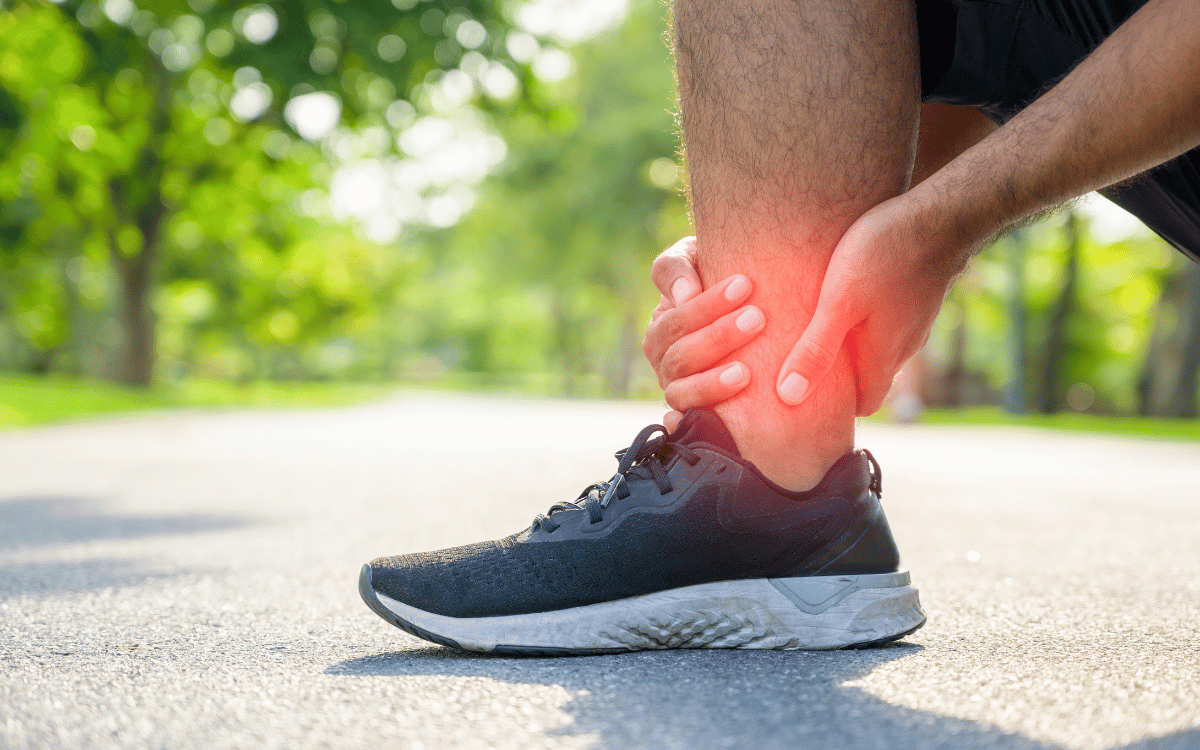Managing ankle pain from repetitive strain begins with understanding what’s causing the issue. The ankle’s ligaments, tendons, and joint surfaces take repeated load during walking, running, or work tasks, and small stresses may build over time. Swelling and tenderness are typically present along the outside or inside of the ankle. Here are some strategies for managing ankle pain:
Stretch Exercises
Begin with general range-of-motion exercises before progressing to tissue-specific stretches. Sit comfortably and trace the alphabet with your foot; this helps move your joint through multiple planes of motion. Next, do calf stretches against a wall.
For the Achilles tendon, gently drop your heels off a step, moving slowly and carefully. You can also stretch your calf by turning your foot inward or outward. Use mobility bands only if a healthcare professional has shown you how to use them. Always stretch after a brief warm-up, and avoid bouncing. If you experience a spike in pain during a stretch, reduce the stretch angle, shorten the hold time, or stop that particular stretch.
Activity Modifications
Match weekly exercises to tissue tolerance, and track it. Reduce hill running, speed work, or other powerful exercises for two to four weeks, then reintroduce one method at a time. Shorten runs or walks, swap hard surfaces for trails or tracks, and break long sessions into shorter bouts with rest. Try the following low-impact exercises to avoid further injuries and prevent existing ones from worsening:
- Cycling
- Pilates
- Pool running
- Swimming
- Rowing
Regenerative Medicine
Some people explore regenerative methods for stubborn ankle pain. These approaches target tissue healing pathways, and they follow specific protocols. A clinician may define the target tissue, discuss risks and expected timelines, then schedule staged treatments. Selection rests on diagnosis and response to prior care, and not every case qualifies. Ask about practitioner experience, complication rates, and post-procedure plans, including time away from sport or work.
Orthotics
Support strategies vary, and the choice depends on mechanics, footwear, and symptoms. Off-the-shelf inserts add mild arch support and rearfoot control, which may reduce strain on certain tendons. Custom devices match your foot shape and loading pattern, depending on your specific needs. Test inserts inside the shoes you use most, since volume and stiffness differ. Replace worn shoes periodically, or when midsole creases and tilting appear. Pair orthotics with gradual activity progressions to allow the ankle to adapt to the new load path.
See a Doctor for Ankle Pain
If ankle pain disrupts sleep, persists for more than three to four weeks, or follows a sudden snap or pop with swelling, seek an evaluation. Red flags include numbness, changes in foot temperature, and visible deformity. A clinician may order X-rays or an ultrasound, assess tendon integrity, and review your training volume, footwear, and surface choices. Bring your activity log, a list of treatments tried, and two pairs of shoes to the visit. Early diagnosis guides the subsequent steps, whether that involves targeted rehabilitation, bracing, or imaging. Schedule an appointment today to get a clear plan and protect your long-term mobility.









Leave a Reply